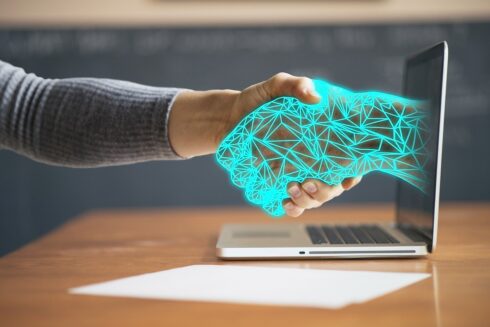
Digital twins are sophisticated software constructs that emerged in the field of product lifecycle management to model and design complex devices like jet engines and nuclear reactors. Today, digital twins extend their utility beyond the design phase to tracking live systems. They ingest device telemetry, maintain state information, and analyze changing conditions in real time. Their functionality offers a rich contextual understanding, enabling fast insights and enhanced situational awareness. By leveraging fast, in-memory computing technology, they can quickly process telemetry and deliver analytics results.
In addition to real-time monitoring, digital twins enable the simulation of complex systems, such as airlines and logistics networks. They aid both strategic planning and operational decision-making with predictive analytics that assists both designers and operations managers.
As digital twins have evolved to analyze live data at scale, the opportunity to integrate them with generative AI has emerged. This combination offers multiple benefits. It has the potential to improve prediction accuracy for generative AI across a wide range of applications. It also opens the door for AI to enhance the value of digital twins in monitoring live systems and to assist in their development.
Software teams need to recognize the opportunities that these combined technologies offer for real-time monitoring and simulation so that they can take full advantage of important new capabilities. Here are a few examples.
Improving AI Outputs with Real-Time Data
By analyzing and aggregating live data in real time, digital twins can significantly enhance AI outputs and mitigate widespread challenges like AI hallucinations. Real-time data can ground AI insights through a process known as Retrieval-Augmented Generation (RAG), enabling digital twins to improve the accuracy of AI responses and reduce errors often seen in generalized AI models. It is not enough for software teams to just incorporate generative AI into software systems that guide complex, live operations. It is vital that they ground AI with RAG to provide the latest, most accurate information.
When a digital twin provides real-time analytics to an AI model with RAG, the model uses this data to generate more precise and relevant responses. RAG operates in two key steps. First, the AI queries an external data source (digital twins in this case) to retrieve pertinent information. Next, it uses this information to refine its responses and minimize the risk of errors. This approach substantially increases the utility of AI across a broad range of applications, from smart cities to e-commerce tracking.
Consider, for example, the task of managing a nationwide fleet of vehicles. It is crucial for dispatchers to detect mechanical problems or operator issues before they escalate and disrupt operations. Dispatchers traditionally rely on telematics software that requires database queries to identify problems. This approach can be both tedious and ineffective. As telematics software embraces generative AI to assist dispatchers, it is vital that the AI model always makes use of the latest fleet telemetry to ensure that it generates accurate guidance. By enabling the AI model to access real-time data analyzed by digital twins, telematics software can avoid hallucinations and provide more effective, up-to-the-second insights. This enables dispatchers to make well-informed decisions to ensure seamless operations.
Enhancing Real-Time Analytics with AI
Today’s machine learning (ML) technology enhances the power of digital twins by helping them interpret live data, identify patterns, and create alerts. Especially in situations like predictive analytics, where developing code to examine telemetry can be complex and problematic, trained ML algorithms can do a better job at a lower cost.
The next step is for software teams to integrate generative AI into digital twin deployments to help operations managers interpret analytics results and identify issues that might otherwise be missed. By integrating AI to enhance real-time analytics, users can develop a more nuanced understanding of emerging issues, improving situational awareness and allowing them to make better decisions.
Using in-memory computing technology, digital twins produce real-time analytics results that users aggregate and query to continuously visualize the dynamics of a complex system and look for emerging issues that need attention. In the near future, generative AI-driven tools will magnify these capabilities by automatically generating queries, detecting anomalies, and then alerting users as needed. AI will create sophisticated data visualizations on dashboards that point to emerging issues, giving managers even better situational awareness and responsiveness.
For example, AI and digital twins can help cybersecurity personnel track intrusions into a corporate or government network to more effectively identify kill chains and interrupt attacks. Digital twins can use ML techniques to monitor thousands of entry points and internal servers to detect unusual logins, access attempts, and processes. However, detecting patterns that integrate this information and create an overall threat assessment may require data aggregation and query to tie together the elements of a kill chain. Generative AI can assist personnel by using these tools to detect unusual behaviors and alert personnel who can carry the investigation forward.
Building Digital Twin Applications
With each passing month, generative AI plays an increasingly important role in helping software developers conceptualize and refine their code. In the near future, they will be able to employ AI to help develop digital twin applications for real-time monitoring and simulation. Using guidance from software developers, AI-powered tools will be able to fill out digital twin templates to create running digital twin models that ingest messages and analyze them for issues or implement simulations.
AI-powered tools can help developers accelerate the development process and focus on high-level design and problem-solving rather than routine coding tasks. In addition, generative AI can assist in creating integrations with libraries, such as ML tools, and relieve developers from the burden of implementing API interfaces.
Generative AI can further streamline development workflows by providing intelligent suggestions for code improvements, evaluating code paths for correctness and completeness, and running tests. It can also identify potential areas where digital twin implementations might benefit from optimizations, propose test scenarios, and provide performance evaluations. For example, AI can examine code written in a general-purpose language to validate that it adheres to the distributed computing model used by digital twins when running on a scalable, in-memory computing platform.
Summing Up
Conventional real-time monitoring has long been hampered by placing a human in the loop to evaluate incoming telemetry stored in static data stores. As the logistics, transportation, security, and other systems we rely on have grown in size and complexity, the need for software teams to migrate to new technologies has become urgent.
The advent of continuous real-time monitoring at scale using memory-hosted digital twins unlocks important new capabilities for identifying and responding to critical issues. Generative AI takes this to the next level by magnifying the power of both software developers and operations managers. The convergence of digital twins and AI promises to drive transformative changes across many industries. Software teams that proactively prepare for these technological shifts will position themselves as leaders in the next wave of digital transformation, opening up new business opportunities and shaping the future of their industries.






